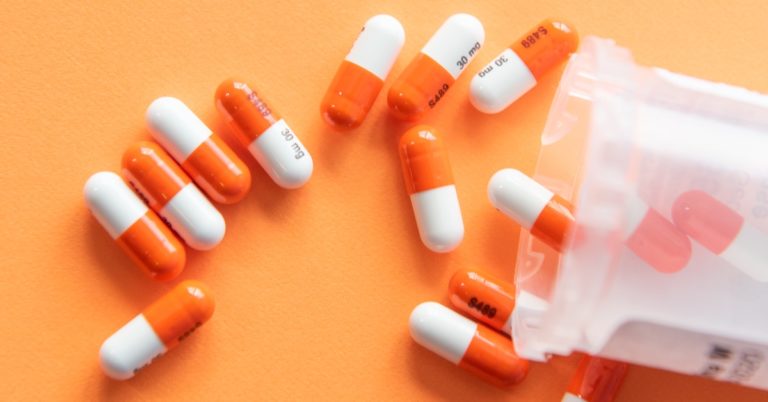What Are The Regulations For Cleaning Validation?

Cleaning Validation In The Pharmaceutical Industry
Cleaning validation in the pharmaceutical industry refers to cleaning product contact surfaces of pharmaceutical manufacturing, packaging, and support equipment (e.g., product contact screens, utensils, etc.).
The validation must demonstrate and document that cleaning procedures effectively and consistently reduce product and cleaning agent residues from product contact surfaces to acceptable limits. Additionally, the validation should demonstrate that routine equipment cleaning and storage does not allow for microbial proliferation.
The Title 21 Code Of Federal Regulations
In the U.S., cleaning validation compliance for pharmaceutical products is governed by the Title 21 Code of Federal Regulations (CFR), Part 211, Current Good Manufacturing Practice for Finished Pharmaceuticals. Specifically, 21 CFR 211.67, Equipment cleaning and maintenance, states:
“Equipment and utensils shall be cleaned, maintained, and, as appropriate for the nature of the drug, sanitized and/or sterilized at appropriate intervals to prevent malfunctions or contamination that would alter the safety, identity, strength, quality, or purity of the drug product beyond the official or other established requirements.”
“Written procedures shall be established and followed for cleaning and maintaining equipment, including utensils, used in the manufacture, processing, packing, or holding of a drug product.”
The European Medicines Agency
The European Medicines Agency (EMA) requires establishing Health-Based Exposure Limits (HBELs) for all drug products based on Permitted Daily Exposure Values as described in Appendix 3 of ICH Q3C (R4). A corresponding Q&A is available, describing implementation of these requirements. You can find more information here.
The Pharmaceutical Inspection Co-operation Scheme (PIC/S) also released its “Guideline on Setting HBEL for use in risk identification in manufacturing different medicinal products in shared facilities” to support a risk-based cleaning validation approach.
Cleaning Validation In The Medical Industry
In the medical device industry, cleaning validation primarily refers to validating the cleaning of the finished medical device itself rather than the equipment used to manufacture it. For devices sold sterile, sterilization validation is additionally required. In the U.S., cleaning validation compliance for medical device products is governed by the Title 21 CFR, Part 820, Quality System Regulation, or 21 CFR 820, QSR, for short. Specifically, 21 CFR 820.70 (e) Contamination Control and (h) Manufacturing Material state:
“Each manufacturer shall establish and maintain procedures to prevent contamination of equipment or product by substances that could reasonably be expected to have an adverse effect on product quality.”
“Where a manufacturing material could reasonably be expected to have an adverse effect on product quality, the manufacturer shall establish and maintain procedures for use and removal of such manufacturing material to ensure that it is removed or limited to an amount that does not adversely affect the device’s quality. The removal or reduction of such manufacturing material shall be documented.”
Additionally, 21 CFR 820.75 Process Validation states:
“Where the results of a process cannot be fully verified by subsequent inspection and test, the process shall be validated with a high degree of assurance and approved according to established procedures. The validation activities and results, including the date and signature of the individual(s) approving the validation and where appropriate, the major equipment validated, shall be documented.”
The International Organization For Standardization
Likewise, the International Organization for Standardization (ISO) 13485:2016 requires that a medical device manufacturer establish documented requirements for the cleanliness or contamination control of a medical device in the following circumstances:
- The organization cleans the product before sterilization or its use or
- The product is supplied non-sterile and is to be subjected to a cleaning process before sterilization or its use or
- The product cannot be cleaned before sterilization or its use, and its cleanliness is of significance in use or
- The product is supplied to be used non-sterile, and its cleanliness is of significance in use or
- Process agents are to be removed from the product during manufacture.
Cleaning Validation FAQs
Let’s take a look at some of the most popular questions professionals have regarding cleaning validation requirements.
What Are Common Cleaning Validation Observations?
In the pharmaceutical industry, year after year, one of the most common warning letter observations is “Written procedures not established/followed for cleaning and maintenance equipment.”
Examples Of Cleaning Validation Warning Letter
For example, a recent warning letter issued in August 2020 includes the following:
CGMP/API/Adulterated – Warning Letter to Mylan Laboratories Limited – Unit 7: The FDA found that the company did not have cleaning procedures to prevent contamination or carryover of a material that would alter the quality of the API. The letter stated that the company’s cleaning validation and verification program for non-dedicated manufacturing and storage equipment was inadequate, in addition to the lack of cleaning records.
In the medical device industry, since cleaning validation is performed on critical cleaning steps affecting the quality or safety of the final product, warning letter observations are associated with cleaning validation and/or sterilization validation not being performed, resulting in an adulterated medical device.
Here’s another example of a cleaning validation warning letter:
CGMP/QSR/Medical Devices/Adulterated – Warning Letter to Oxford Performance Materials, Inc.: The FDA found that the company did not perform cleaning validation of its cranial implants despite labeling the products as “clean and ready to sterilize.” The FDA also noted that Oxford had confirmed a complaint regarding a cranial implant with residual powder from inadequate cleaning.
What Does Your Cleaning Validation Program Look Like?
If you are looking for an audit of your cleaning validation program, contact us. Whether you are in the pharmaceutical or medical industry, it’s essential to formulate a plan to address any compliance gaps, check out how you implement solutions, or make sure employees are up to date with any training.
By: Amanda Gainey, Compliance Team Validation Associate